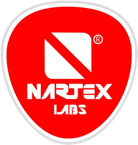Varicose veins, very dangerous “spider veins”
Varicose veins, very dangerous “spider veins”
Categories

Varicose veins, very dangerous "spider veins" Juan Fernando González G. We have all ever observed a person who has the famous bluish or reddish "spiders" on their legs. These marks correspond to varicose veins, a disorder that occurs when the veins swell and twist due to a dysfunction that delays blood flow to the heart. Dr. Eugenia Rivera Chino, Coordinator of Medical Programs of the Mexican Institute of Social Security (IMSS), points out that this dysfunction occurs more frequently in the legs because the path that the blood must travel, from that site and to the heart, is very prolonged. Consequently, when we stand or sit for a long time, the blood advances slowly, which hinders the functioning of the venous valves and dilates the veins. An average of 37,681 people with this condition are cared for annually at the IMSS. Of these, approximately 70 percent are women between 30 and 60 years of age, says the specialist. Trigger factors Genetic load is a factor that determines the increased risk of acquiring a disease, whatever it may be, and varicose veins are no exception: it is a fact that people with a family history of overweight or obesity, for example, have a greater chance to develop them. However, there are other elements that must be taken into consideration: age, pregnancy, hormonal changes and the fact of sitting, or standing, for long periods of time. For all the above, women are the most affected. Prevent, the best solution Here are some tips to prevent the appearance of varicose veins: • It is advisable to walk between 10 and 15 minutes, every 2 or 3 hours. • You have to do everything possible to have an active life, that is, less hours of television and more time of activity. • It is very important to maintain a diet rich in fiber, and avoid joining the club for overweight people. • Swimming, cycling and walking are the most beneficial exercises against varicose veins. • It is highly recommended to take breaks, two or three times a day, keeping the legs high and above the level of the heart. • Wear elastic compression stockings. Watch out for symptoms As this disease can become complicated and progress, it is best to seek medical help if some of its characteristic symptoms appear: 1.- Pain, tingling, heaviness and habitual fatigue in the legs. 2.- Swelling in the lower part of the legs and ankles, mainly after standing for a long time. 3.- Night cramps, also known as “tired legs syndrome”. 4.- Sensation of heat, redness, dryness and constant itching of the skin. 5.- The well-known reddish or violet lines with the appearance of a cobweb. Homeopathy, a great help Homeopathy can act at various levels to address the problem of varicose veins. Dr. Guillermo Basauri, a graduate in Medicine and Surgery graduated from the University of the Basque Country (Spain), and an expert in Homeopathic Therapeutics from the University of León (Spain) explains the benefits of this therapy: 1.- It serves to moderate the personal predisposition to suffer varicose veins. 2.- It is very useful to improve discomfort and symptoms: heaviness, edema, pain, itching, cramps, etc. 3. It has been proven effective in treating complications from varicose veins, such as varicose ulcers and thrombophlebitis (blood clots that can block a vein). 4.- Homeopathy produces that it improves the tone and the tissues that form the walls of the veins. 5.- It is excellent for improving recovery and minimizing the risk of complications in patients who undergo surgery. Finally, it is pertinent to point out that there are many homeopathic medicines to treat this disorder: Hamamelis virginiana, Aesculus hippocatanum, Clematis vitalba, Lachesis and Nitricum acidum, among others. Some are preventive, and are available to consumers in the natural products section of many pharmacies, and others are therapeutic; in this case, the recommendation for its use must come from a homeopathic doctor. References · Consejo General de Enfermería (España). https://www.consejogeneralenfermeria.org/ https://www.consejogeneralenfermeria.org/docs_revista/Dossier_Salud_de_las_Piernas_e_IVC_Cinfa.pdf · Instituto Mexicano del Seguro Social (IMSS). http://www.imss.gob.mx/prensa/archivo/202001/050 · Hablando de Homeopatía. https://www.hablandodehomeopatia.com/la-homeopatia-en-el-tratamiento-de-las-varices/
Medical practices, regulations and available product portfolios might differ from one country to another.
As a result, the medical information provided in the site which you are going to visit may not be appropriate for product use in your country.
